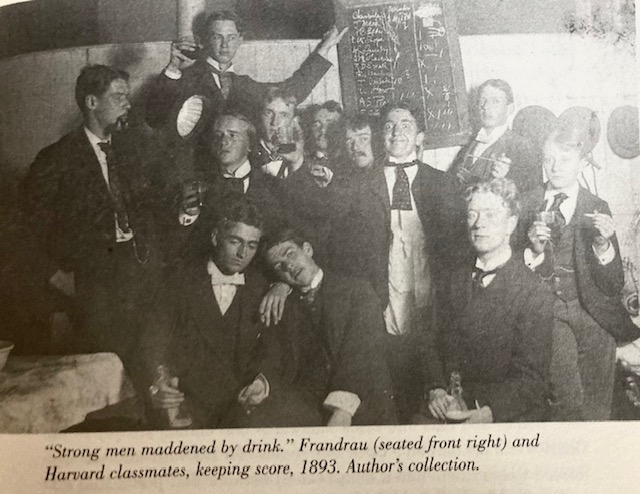
November 19, 2023
by Philip Gambone
Back in September, I wrote an appreciative piece about Sybille Bedford's Mexican travel book, A Visit to Don Otavio. One of my readers thought I was too lenient with Bedford's lack of "cultural humility." She wrote to me: "I fail to see the charm. Bedford doesn't even bother to get the Spanish right. Otavio should be Octavio. The only situations she enjoys in Mexico are when she's staying somewhere very luxurious for cheap."
As a corrective, she sent me another writer's travel account of Mexico, Charles Macomb Flandrau's Viva Mexico! I had never heard of Flandrau or this book, but it didn't take me long to become totally captivated by it. (By the way, I still love Bedford's book, despite its alleged cultural insensitivity.)
In some way, the two writers, who were born 40 years apart—Flandrau in 1871, Bedford in 1911—shared similar sensibilities. Both came from privileged, aristocratic backgrounds and were well educated in literature and the arts. They had exquisite taste. They did not suffer fools lightly and could be, at times, imperious and haughty. Each developed a prose style that was intelligent, elegant, witty and utterly engaging. And each, by the way, was homosexual.
As a young man, Flandrau, who hailed from St. Paul, Minnesota, "traveled incessantly" under his mother's wing—Belgium, Holland, England, France, Spain, Germany, Egypt, Northern Europe, and Russia, including a steamboat cruise down the Volga. These wanderings, his biographer, Larry Haeg, writes, "cultivated in young Charlie a lifelong and leisurely habit for observing the color, eccentricity, and spontaneity of the great human parade."
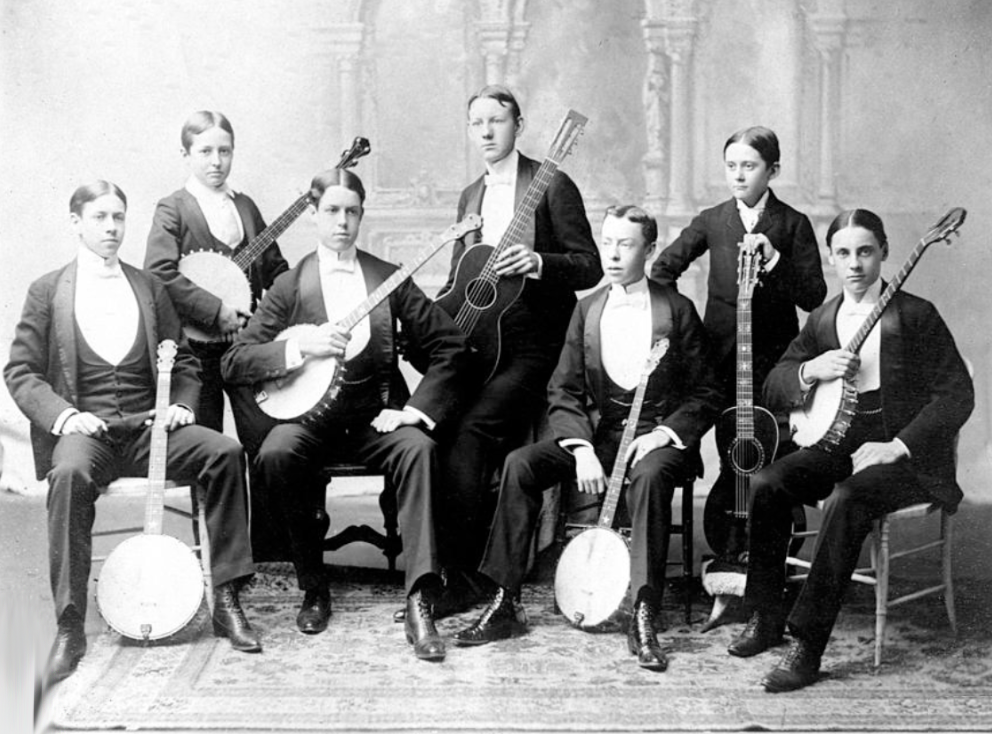
Harvard Banjo and Mandolin Club
*
When Flandrau was twenty, he entered Harvard. During his freshman year, he was not particularly studious, preferring to cross the river into Boston, where, with his independent income, he hobnobbed with society people at teas, musical events, the theater, and literary gatherings. At Harvard, he joined the mandolin club and wrote stories for the college literary magazine. By junior year, he was named class poet. He became editor of the Lampoon, Harvard's humor magazine, acted and sang in a "raucously successful" Hasty Pudding Show, and taught English to workers enrolled in Harvard's extension school. "His classmates," recalled his lifelong friend Arthur Stanwood Pier, "began eagerly to seek the companionship of the young man with the brilliantly curly red hair and the engaging smile whose talk was so sparkling."
When he graduated in 1895, Flandrau accepted Harvard's offer to teach writing. He worked hard at his teaching duties, but left after a year. Out of his college experience emerged his first book, Harvard Episodes (1897), a series of stories about college life. It sold out in just a few weeks. A second book, The Diary of a Freshman, followed four years later.

In 1904, again accompanied by his mother, Flandrau went to Mexico to visit his brother Blair, who had bought a coffee plantation. Mother and son stayed several months. For the next few years, Flandrau returned to Mexico every winter, taking casual notes but never intending to write a book about the country.
Nevertheless, when he was back in Saint Paul, he read every book he could find on Mexico. "He concluded," writes Haeg, "that the average travel book lacked not so much the power of observation or the right words but a sense of proportion." Whatever the impetus, Flandrau began to write pieces about his experiences. He sent these essays to his Minneapolis friend, William C. Edgar, a businessman who also published a small literary magazine called the Bellman. They were published in 1907.
An editor at Appleton, a New York publishing house, persuaded Flandrau to let him publish the collected essays in book form. "No one is going to buy this book," another editor at Appleton wrote to him, "and in consequence you won't make money out of it but I am glad to publish it as it is really very charming."
Collected as Viva Mexico!, the book was very well received. One critic wrote, "With little apparent sequence, this esoteric chronicler chats on, now serious, now humorous, and lo, a whole people is envisaged." Viva Mexico! went into a second edition, which was sold on Mexican trains.
In Viva Mexico! Flandrau avoided all the pitfalls of less brilliant travel books on Mexico. His observations are free of cant and cliché. He doesn't try for a comprehensive report and avoids the myopic point of view of the tourist who is only looking for color and easy takes.
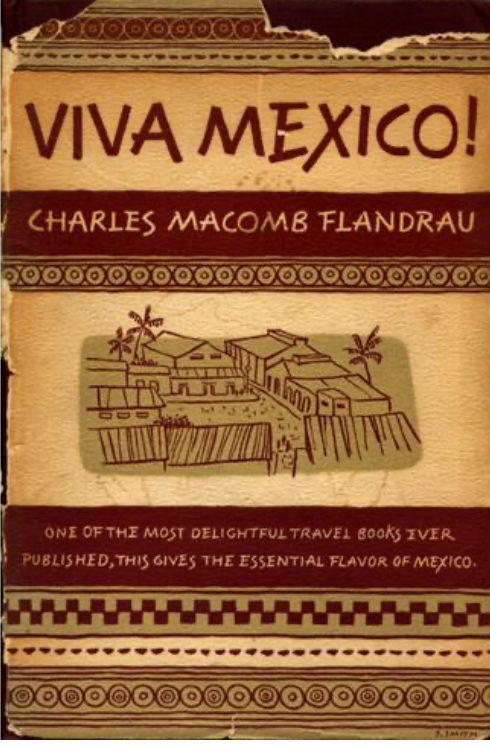
Flandrau's approach in each chapter was to let his pen wander amiably from one observation to another in a breezy but penetrating conversational style. His overall theme, to quote the title of Chapter III, was that "One never ceases to marvel."
"Superficially, Mexico is a prolonged romance," he wrote. "For even its brutal realities—of which there are many—are the realities of an intensely pictorial people among surroundings that, to Northern eyes, are never quite commonplace."
"Pictorial people" may now strike us as patronizing, but part of Flandrau's appeal is that he never, in fact, writes condescendingly about the under classes. Sometimes he is bewildered by them, or exasperated, or impatient, but he never cops a superior attitude. Indeed, it outraged him that the people of Mexico—"in the name of gods and of God, of kings, dictators, popes, generals, emperors, and presidents"—were treated "like so many head of irresponsible cattle."
"When one lives among them [the poor], one marvels, not like the tourist of a week, that they are dirty, but that under the circumstances they are as clean as they are; not that so many of them are continually sick, but that any of them are ever well; not that they love to get drunk, but that they can bear to remain sober."
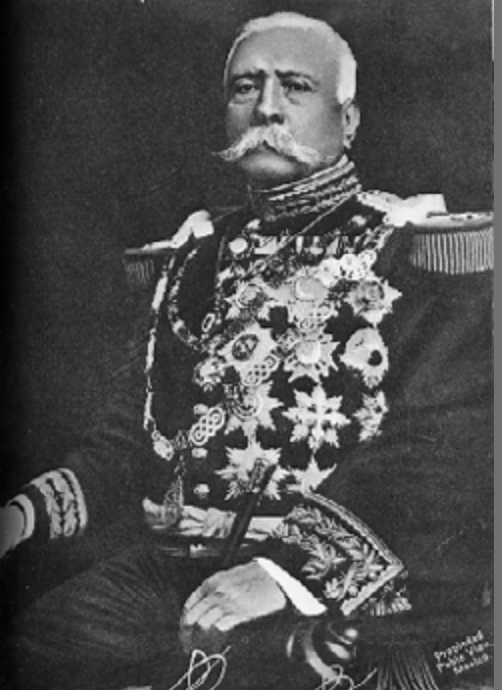
Porfirio Diaz
*
Flandrau was in Mexico during the last years of the Porfirio Diaz dictatorship, when the country was, as he put it, "not a republic, but a military Diazpotism." While he was not overly critical of Diaz's policies, he was certainly candid about how the plight of the vast number of people had hardly benefitted from the thirty-year reign of this so-called "president."
At the same time, he was forthright about the "lawlessness and melodrama" that could erupt in Mexico. He also critiqued the lack of certain basic sanitary amenities—drainage and water works, for example. Nevertheless, the book never fails to appreciate, as he put it, the "poetic mystery" of Mexico.
Flandaru's attention—appreciative, bemused, at times scathing—went everywhere: to the Mexican pillow ("a narrow, long, unsympathetic contrivance tightly stuffed with hair"); to wakes ("the deceased is not exactly forgotten, but it no longer usurps the center of the stage"); to Mexican town squares ("a kind of pulsating, civic heart"). Even the picturesque names of saloons—"the gift of fancy," Flandaru says—merited two amused and amusing pages from him.
His descriptions—of the landscape, of towns, of dawn over Mexico City—are often gorgeous. He was certainly not blind to the deficiencies of the capital city—its dearth of European style cafés, the way the place was being "de-Mexicanized," the "primitive and tedious" theaters—but he stressed that one should, in the long run, take the city as it is "rather than finding fault with it for not being what one assumed it was going to be." That maxim seems to be his approach to all of Mexico.

Alms box
*
Nevertheless, Flandrau, who from a young age "loathed the church and everything connected with it," reserved some of his most withering criticism for the Catholic Church in Mexico and the way this "gigantic corporation" had hypnotized the faithful. He deplored the custom of the many little alms boxes in front of every side chapel, each one labeled so as to play upon the emotions, and open the purse strings, of the impoverished faithful. Moreover, he found the way the Mass was conducted deplorable. "The apparatus of worship does not often rise above the tawdry," he wrote, "and the music is almost always execrable." He scorned the practice of charging the poor more than they could pay for a marriage ceremony.
He also denounced the mania for doing over the exteriors of churches. "In the last four years, some of the most impressive examples of Spanish colonial church architecture have been scraped, punctured with pointed windows, supplied with gargoyles and porticoes and then whitewashed. To remember the cathedral in Jalapa as it was, and to see it now, a jaunty horror half clad in cheap, Gothic clothes that don't fit, brings a lump to one's throat." While he seems never to have visited San Miguel—what tourist did at the beginning of the 20th century?—one wonders what he would have said about our Parroquia, tricked up in neo-Gothic drapery.
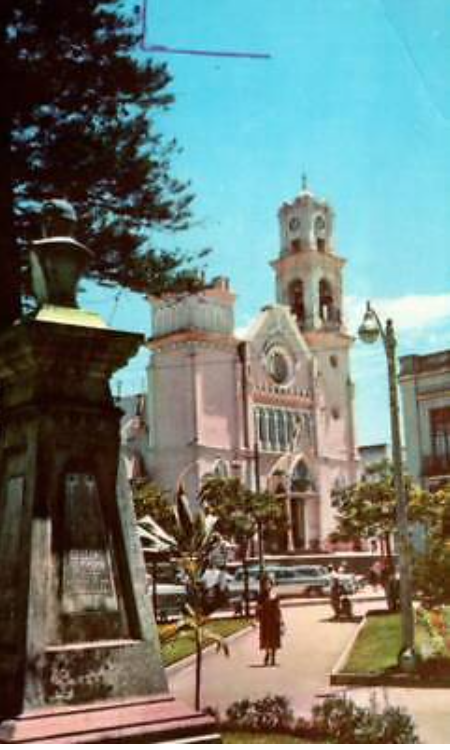
Jalapa Cathedral
*
Despite his criticisms, Flandrau's generally fair-minded approach to Mexico extended even to the Church. Yes, he wrote, it might be "corrupt, grasping, resentful; but it unquestionably gives millions of people something without which they would be far more unhappy than they are—something that no other church could give them."
Another annoyance Flandrau lays out in the book is the "positive ignorance" and "lack of curiosity" of Americans who live in Mexico. "I am not like an American woman tourist in Cuernavaca (it was her first week in the country) who informed me that she sat in her hotel all day because she was so tired of seeing the streets full of Mexicans!"
Then there are the tourists who complain about there being "so few sights" in Mexican towns. "The traveler whose days have not been mapped out for him and who is not in the habit of strolling, of sitting in churches, of shamelessly idling in parks and plazas, is likely to complain of a lack of occupation. It is difficult for him to accept the fact that the most notable sight in Mexico is simply Mexico."
Flandrau reserved his most rollicking satire for an expat English family, the Trawnbeighs, "the sort of people who ‘dressed for dinner,' even when, as sometimes happened, they had no dinner in the house to dress for."

Charles Macomb Flandrau
*
The Trawnbeighs—mother, father and four children—are in Mexico, running a small coffee ranch and living the life of proper English country people supplemented by a small inheritance. They are the kind of people—right out of Jane Austen, Thackery, George Eliot, and Anthony Trollope, says Flandrau—who make it their life's project to keep up appearances. The mother and her three daughters are always seen in "hideous but distinctly 'dressy' dresses; the son wiles away the time playing tennis in flannels. There is afternoon tea in a non-existent garden, where the topics of conversation are pheasant shooting and the best places for haberdashery and Gladstone bags.
Overall, one gets the impression that Flandrau was eminently good-natured about Mexico. And humble about his own opinions. "Everyone's experience is different," he wrote, "and everyone, in a sense, is groping his way—like Cortés on his prodigious march up from the sea." He was happy to relax into the costumbres of this country he loved and to acknowledge that there was no Ultimate Truth about Mexico or, for that matter, about the circumstance of life in general. Reading Flandrau is like spending an evening with a smart, observant, genial companion.
Flandrau went on to write three more books, but he never seemed to push himself to realize the full potential of his talent. He remained, as Haeg puts it, "a leisure-hour gentleman of the pen." The day after his death, the St. Paul Daily News noted, "Few modern writers have had a better literary style or a more facile brain." And because of this, the obituary bemoaned that "his greatest book was the one he didn't write." That may be true, but Viva Mexico! is certainly a book that has kept Flandrau on the literary map of those writers who have opened our eyes, and our hearts, to Mexico.
**************

Philip Gambone, a retired high school English teacher, also taught creative and expository writing at Harvard for twenty-eight years. He is the author of five books, most recently As Far As I Can Tell: Finding My Father in World War II, which was named one of the Best Books of 2020 by the Boston Globe. It is available through Amazon, at the Biblioteca bookshop, and at Aurora Books off the Calzada de la Aurora.
**************
*****
Please contribute to Lokkal,
SMA's online collective:
 ***
***
Discover Lokkal:
Watch the two-minute video below.
Then, just below that, scroll down SMA's Community Wall.
Mission

Visit SMA's Social Network
Contact / Contactar

